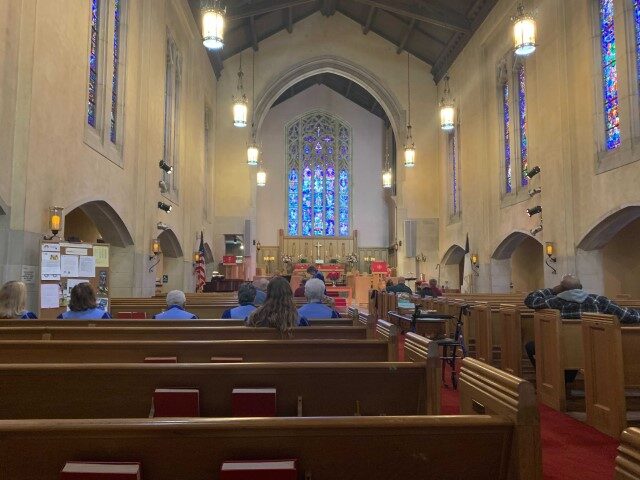Church attendance in the United States is lower than before the coronavirus pandemic, a Gallup News survey found.
“U.S. church attendance has shown a small but noticeable decline compared with what it was before the COVID-19 pandemic,” the survey report states.
The report details:
In the four years before the pandemic, 2016 through 2019, an average of 34 percent of U.S. adults said they had attended church, synagogue, mosque or temple in the past seven days. From 2020 to the present, the average has been 30 percent, including a 31 percent reading in a May 1-24 survey.
Gallup noted that church attendance levels are roughly 10 percentage points lower than what the pollster measured in 2012 and years prior.
“It is not clear if the pandemic is the cause of the reduced attendance or if the decline is a continuation of trends that were already in motion,” the survey report states. “However, the temporary closure of churches and ongoing COVID-19 avoidance activities did get many Americans out of the habit of attending religious services weekly.”
The survey found that attendance rates since 2020 are lower among nearly every major subgroup besides political liberals and adults with no religious affiliation, groups which already had low attendance levels before the pandemic.
Church attendance among Protestants is down four points, 44 percent to 40 percent, and seven points among Catholics, 37 percent to 30 percent. Sample sizes for other religious groups were too small to provide reliable estimates from this survey, according to Gallup.
By political affiliation, Republicans, Democrats, and independents show a similar decline in church attendance since the beginning of the pandemic. However, Republicans (40 percent) are more likely than Democrats (25 percent) and independents (25 percent) to attend religious services.
The survey additionally found that young adults ages 18 to 34 years old are least likely to have attended church in the last seven days. Eighty-two percent in that age group had not attended church in the past week, while 17 percent did in person and 1 percent watched remotely.
These findings echo the results of other surveys this year, which have found less religious interest among young people. A Wall Street Journal-NORC poll released in March found that young respondents were less likely to rank religion as “very important” to them than seniors, 31 percent to 55 percent.
Every other age group’s attendance within the past seven days in the Gallup survey hovered between 27 and 31 percent. Adults 55-plus had highest remote attendance at 8 percent.
When Gallup polled about religious attendance in April of 2020, 27 percent of attendees reported participating virtually, while 4 percent went in person — a trend that continued though much of 2020. Then in May of 2021, church attendance “was steady at 30 percent with about twice as many attending in person as remotely,” according to the poll report.
Since May of 2021, the percentage of in-person attendees has continued to increase, hitting 26 percent in May of 2023. The survey found that just 5 percent of regular attendees still participate virtually.
The survey was conducted between May 1-24, 2023, with 1,011 U.S. adults. The margin of sampling error is ±4 percent at the 95 percent confidence level.

COMMENTS
Please let us know if you're having issues with commenting.